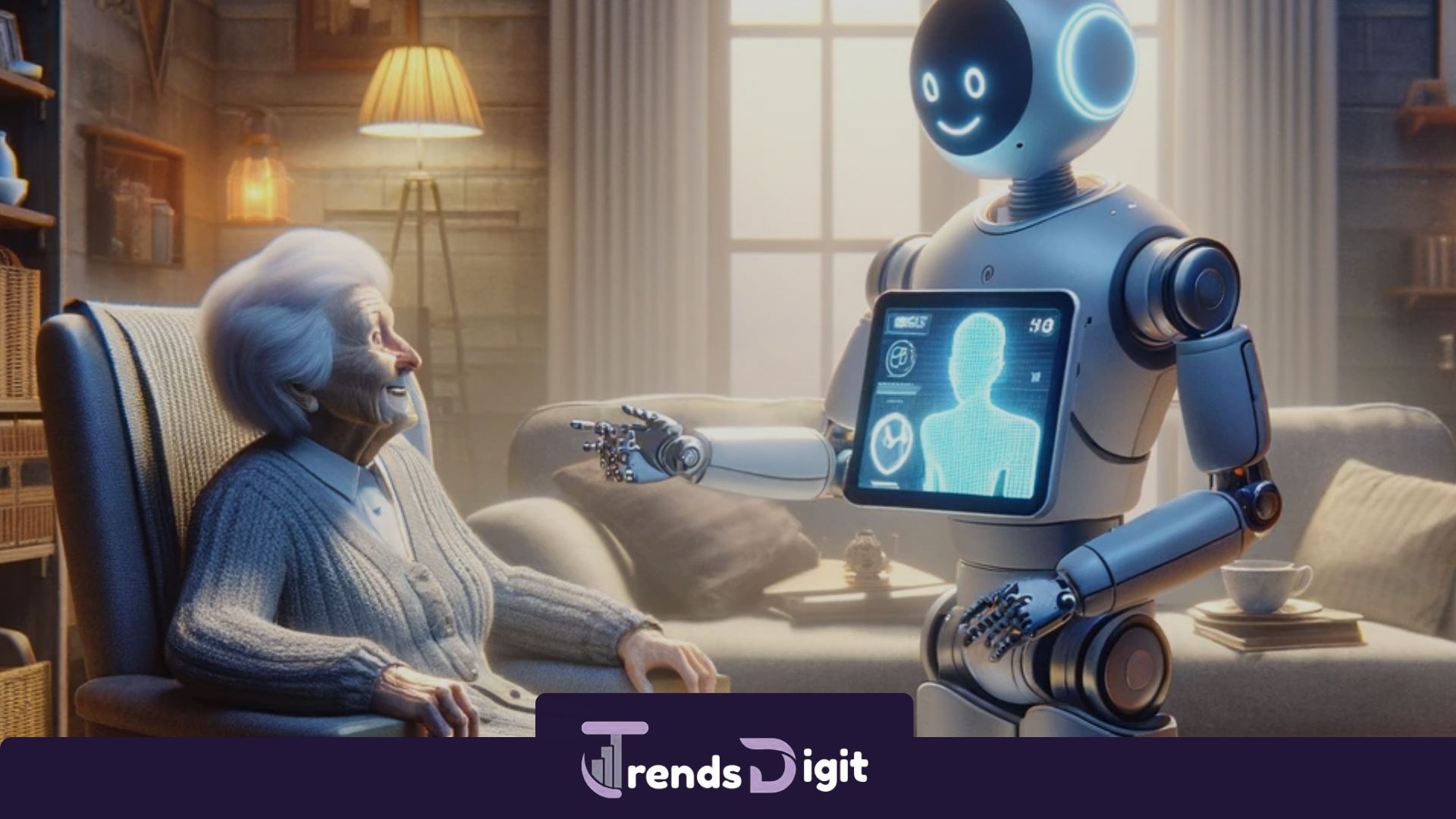How Home Robots Are Transforming Our Digital Lifestyle
How home robots are transforming our digital lifestyle has become a critical topic in today’s technology-driven world. These intelligent machines now perform tasks that once required human intervention, reshaping the way we interact with our homes and personal devices. By combining artificial intelligence, machine learning, and connectivity, home robots are enhancing convenience, efficiency, and overall quality of life. They manage household chores, provide security, support health monitoring, and even offer companionship. This article explores the diverse ways these robots influence our routines, productivity, and leisure activities, while also examining the social and economic impacts they introduce. Trendiginews is here to explain all of these topics for you thoroughly in this article.
How Home Robots Improve Household Efficiency
Home robots improve household efficiency by handling repetitive tasks with precision and speed. Robotic vacuum cleaners, for example, map rooms, avoid obstacles, and clean floors autonomously. They save homeowners several hours each week while maintaining consistent cleaning standards. Smart kitchen robots can assist in meal preparation by chopping vegetables, stirring ingredients, and monitoring cooking times. These robots reduce human error, prevent accidents, and allow families to spend more time on meaningful activities. As technology advances, home robots integrate seamlessly into smart homes, syncing with lighting, temperature controls, and voice assistants to optimize energy usage and convenience.
Robotic Lawn Mowers
Robotic lawn mowers maintain gardens efficiently by cutting grass automatically according to preset schedules. They navigate uneven terrain, detect obstacles, and adjust cutting height for optimal results. Owners no longer need to spend weekends manually mowing, freeing up time for other outdoor activities. Some advanced models include weather sensors, pausing work during rain, and resuming once conditions improve. These machines also operate quietly, reducing noise pollution in residential areas. Over time, robotic mowers can extend the lifespan of lawns by promoting uniform growth, and many are energy-efficient, using rechargeable batteries instead of fuel-powered engines.
Smart Cleaning Robots

Smart cleaning robots go beyond simple vacuuming. They can mop floors, sanitize surfaces, and detect dirt accumulation in hard-to-reach areas. Advanced models employ AI-driven mapping, ensuring they cover every corner without missing spots. Many devices integrate with mobile applications, allowing users to schedule cleaning sessions remotely and monitor progress in real-time. Homeowners benefit from a healthier living environment, reduced allergens, and consistent cleanliness without lifting a finger. These robots also learn from user behavior, adapting cleaning routines based on family schedules and frequently used areas, improving both efficiency and convenience.The Rise of the Metaverse: What Businesses Need to Know
How Home Robots Enhance Digital Connectivity
Home robots enhance digital connectivity by linking multiple smart devices into a single, cohesive system. They serve as hubs, controlling lighting, climate, entertainment, and security through voice commands or app interfaces. This connectivity allows homeowners to manage daily routines from anywhere, fostering convenience and reducing stress. Robots equipped with AI analyze usage patterns, making automated adjustments that improve comfort and energy efficiency. For instance, a robot may lower the thermostat when no one is home or turn on lights before family members enter rooms. By centralizing control, these devices streamline digital lifestyle management and create more intuitive living spaces.
Integration with Voice Assistants
Integration with voice assistants allows home robots to respond to natural language commands. Users can ask robots to perform chores, play music, or read reminders without manual input. This feature simplifies interactions, making technology accessible for all ages, including elderly family members. Robots that combine voice recognition and AI can distinguish between family members, offering personalized responses and customized routines. Over time, the system learns preferences, enhancing convenience and user satisfaction. Voice-controlled robots also support multi-tasking, letting users engage in work, leisure, or social activities while their homes operate efficiently in the background.
Remote Monitoring and Control
Remote monitoring and control capabilities make home robots indispensable in modern households. Owners can check security cameras, receive alerts, or control devices from smartphones, even when traveling. Robots equipped with sensors detect unusual activity, fire, or water leaks, sending immediate notifications. This proactive approach prevents damage and ensures family safety. Additionally, remote control allows users to schedule tasks like vacuuming or lawn mowing, adapting routines to daily needs. By connecting homes to cloud-based platforms, these robots provide seamless updates, enhanced security, and continuous improvements without requiring manual intervention.
Robots for Support Health and Wellness
Home robots support health and wellness by assisting with fitness, medication management, and mental well-being. They can remind users to take medications, measure vital signs, and encourage physical activity through interactive prompts. Seniors and individuals with mobility issues benefit greatly from these features, as robots enhance independence and reduce reliance on caregivers. Some robots incorporate AI-driven mental health support, offering conversational engagement, guided meditation, or relaxation exercises. These capabilities help reduce stress, combat loneliness, and improve overall quality of life. Health-focused robots represent a fusion of technology and caregiving, demonstrating how digital lifestyle integration extends beyond convenience.
Fitness Assistance
Fitness-focused robots provide personalized exercise guidance, track performance, and motivate users to maintain consistent routines. They monitor posture, count repetitions, and offer real-time feedback for improvement. Some devices even create customized workout plans based on individual goals and progress. By combining AI analytics with interactive interfaces, these robots turn exercise into an engaging, gamified experience. Users can exercise at home safely while receiving data-driven insights, eliminating the need for in-person trainers. The result is a more effective fitness regimen tailored to personal health metrics, accessible to people of all ages and fitness levels.
Medication and Health Reminders
Robots equipped with medication and health reminders improve adherence to treatment plans. They alert users when it is time to take medications, record dosages, and provide notifications to caregivers. These robots reduce the risk of missed or incorrect doses, particularly for elderly or chronically ill patients. Some models track blood pressure, glucose levels, or heart rate, sending updates to mobile apps or healthcare providers. By integrating health monitoring with daily routines, robots empower individuals to maintain consistent wellness practices, improving long-term outcomes and providing peace of mind for families managing health concerns.
.
Robots of Transform Entertainment and Leisure

Home robots transform entertainment and leisure by offering interactive, personalized experiences. They can play music, stream videos, and even narrate stories for children or adults. AI-driven recommendations help users discover content tailored to their preferences, creating a highly engaging digital environment. Some robots incorporate augmented reality or holographic displays, blending virtual experiences with physical spaces. This innovation allows families to enjoy immersive games, exercise routines, or educational activities together. By combining entertainment with smart home integration, these robots make leisure more convenient, interactive, and adaptable to individual schedules.
Personalized Media Recommendations
Robots provide personalized media recommendations by analyzing viewing habits, search patterns, and user preferences. They suggest music playlists, TV shows, or movies that align with mood, time of day, or family interests. This customization reduces time spent browsing for content and increases user satisfaction. AI algorithms continuously refine suggestions based on feedback and interactions. Over time, robots anticipate needs, creating a seamless entertainment experience. Additionally, these devices can sync with smartphones or tablets, ensuring consistent recommendations across multiple platforms and devices within the household.
Interactive Gaming and Learning
Interactive gaming and learning is another area where home robots excel. Robots offer educational games that teach coding, language skills, or problem-solving through fun activities. Children and adults can engage in physical and mental challenges with immediate feedback, enhancing learning retention. Some robots combine AI with sensors to adjust difficulty levels dynamically, ensuring tasks remain challenging yet achievable. Beyond education, robots also support virtual multiplayer experiences, connecting family members or friends in shared activities. This integration of play and learning enhances cognitive development while fostering social interaction in digital lifestyles.
How Home Robots Improve Home Security
Home robots improve home security by providing constant surveillance, threat detection, and emergency response capabilities. Equipped with cameras, motion sensors, and AI recognition systems, robots monitor environments and identify unusual activity. They can distinguish between residents, visitors, and intruders, sending alerts only when necessary. Some robots patrol outdoor areas, inspect windows, and even alert authorities in emergencies. By combining autonomous movement with real-time monitoring, these devices increase safety and reduce reliance on traditional security systems. They also integrate with smart locks, alarms, and lighting, enhancing security through automation.
Intruder Detection and Alerts
Robots use AI-powered intruder detection to recognize unauthorized movement or unusual behavior. They can send notifications via smartphones or apps, allowing homeowners to respond promptly. Advanced systems differentiate between pets, wildlife, and potential threats, reducing false alarms. Some models even record events for evidence collection or provide live streaming to remote devices. By maintaining vigilance 24/7, these robots give families peace of mind while reducing dependency on human monitoring or external security personnel.
Emergency Response Assistance
Emergency response assistance is another critical function of home robots. In situations like fire, flood, or medical emergencies, robots can alert emergency services, guide residents to safe areas, and provide real-time status updates. Some robots include first-aid kits or temperature sensors to assist until help arrives. This capability is particularly valuable for elderly or disabled individuals, ensuring timely intervention and reducing risk during critical situations. By combining prevention, monitoring, and immediate response, home robots redefine household safety in the digital age.
Robots Contribute to Energy Efficiency

Home robots contribute to energy efficiency by monitoring resource usage and automating adjustments. They control lighting, heating, and cooling systems, optimizing energy consumption without sacrificing comfort. Smart algorithms analyze patterns, adjusting devices during peak or low-demand periods. Robots can turn off unused appliances, close windows, or manage irrigation systems, reducing waste and costs. By integrating with renewable energy sources or home batteries, they also maximize sustainability. This synergy between robotics and energy management supports environmentally conscious digital lifestyles while reducing household expenses.
Smart Climate Management
Smart climate management allows robots to maintain optimal indoor temperatures automatically. Sensors detect room occupancy, outdoor weather changes, and individual preferences, adjusting heating or cooling systems accordingly. This minimizes energy consumption while maintaining comfort levels. Robots can also anticipate seasonal changes, preparing homes for heat waves or cold snaps. By linking to smart thermostats and ventilation systems, they ensure energy-efficient operation without manual intervention. Over time, data collected from these systems enables further optimization, reducing energy bills and carbon footprints for homeowners.
Efficient Appliance Control
Robots provide efficient appliance control by turning off idle devices, managing water usage, and scheduling energy-intensive tasks during low-demand hours. They reduce unnecessary power consumption from kitchen appliances, washing machines, or lighting systems. Some advanced models even recommend energy-saving alternatives or maintenance routines. By monitoring usage trends, these robots help homeowners make informed decisions that improve sustainability and cost efficiency. Automation combined with AI ensures that energy savings occur consistently, even without human oversight, making home management smarter and greener.
How Home Robots Shape Social Interaction
Home robots shape social interaction by connecting families, friends, and communities through technology. Robots can facilitate video calls, share reminders, or provide companionship to individuals who live alone. They also support collaborative activities, such as group learning or interactive games, bridging distances between households. AI-driven social features adapt communication styles based on user behavior, enhancing engagement and reducing social isolation. These devices offer both entertainment and emotional support, demonstrating that home robotics extends beyond convenience into human connection.
Companionship for Seniors
Robots offer companionship for seniors by providing conversation, reminders, and engagement in daily activities. They help reduce loneliness, encourage cognitive exercises, and support emotional well-being. Some robots respond to emotional cues, adjusting interactions to comfort users or lift moods. Families gain reassurance that loved ones receive attention and monitoring, even when physically distant. The companionship extends beyond basic conversation, integrating health support and entertainment, making seniors feel connected, safe, and mentally stimulated.
Facilitating Remote Collaboration
Home robots facilitate remote collaboration by enabling shared virtual spaces for work, study, or hobbies. They assist with communication, task coordination, and interactive presentations. Teams can collaborate from different locations while robots manage environmental controls, display information, or guide activities. By bridging physical distances, robots enhance productivity and maintain social bonds, supporting the modern digital lifestyle. Integration with other smart devices ensures that collaboration remains smooth, interactive, and adaptive to real-time needs.
Challenges and Considerations in Home Robotics
While home robots offer immense benefits, challenges remain. High costs, technical limitations, and privacy concerns require careful consideration. Users must manage software updates, battery life, and compatibility with existing smart devices. Data security is critical, as robots collect personal information for functionality and AI learning. Ethical questions also arise, including dependence on machines, social isolation, and potential job displacement in domestic services. Understanding these considerations ensures responsible adoption while maximizing the advantages of robotic technology.
Privacy and Data Security
Privacy and data security remain top concerns for homeowners using robots. Many devices collect sensitive information, including daily routines, health data, and security footage. Users must implement strong passwords, encrypted connections, and regular updates to prevent breaches. Manufacturers also need transparent policies regarding data storage, usage, and third-party sharing. Balancing convenience with security ensures that robots enhance digital lifestyles without compromising personal information or safety.
Cost and Maintenance
Cost and maintenance influence adoption rates of home robots. Initial investments can be high, particularly for multifunctional devices. Routine maintenance, such as cleaning sensors, updating software, and replacing batteries, ensures optimal performance. Users must weigh the benefits of convenience, efficiency, and security against financial and operational responsibilities. By selecting devices that align with lifestyle needs, families can achieve long-term value and a smoother integration into daily routines.
Future Trends in Home Robotics
Future trends in home robotics indicate even deeper integration with digital lifestyles. Advances in AI, machine learning, and sensor technology will make robots more intuitive, adaptive, and human-like. We can expect expanded capabilities in healthcare, energy management, entertainment, and social interaction. Collaboration between home robots and other smart devices will create fully autonomous, intelligent households. As costs decrease and technology improves, more families will benefit from these devices, transforming the way we live, work, and interact in digitally enhanced environments.
AI-Driven Personalization

AI-driven personalization will allow robots to anticipate needs and preferences with unprecedented accuracy. Systems will learn from user behavior, adapting schedules, routines, and interactions automatically. Personalized environments enhance comfort, productivity, and overall satisfaction. Robots may predict meals, exercise routines, or home maintenance tasks based on past patterns. The result is a seamless integration of technology into daily life, making homes truly intelligent, responsive, and tailored to each household member.
Expanding Healthcare Capabilities
Healthcare applications for home robots will expand significantly. Robots may provide remote monitoring, telemedicine support, and early diagnosis assistance. AI algorithms will detect subtle health changes and alert caregivers or medical professionals. This proactive approach enhances preventive care, reduces hospital visits, and supports independent living for seniors and vulnerable populations. By combining physical assistance with digital monitoring, home robots will become central to personal wellness management in the future.
.
Conclusion: How Home Robots Are Transforming Our Digital Lifestyle
Home robots are transforming our digital lifestyle in ways that extend far beyond convenience. They optimize household efficiency, enhance security, and manage energy consumption, all while supporting health, fitness, and entertainment. These intelligent machines foster social interaction, provide companionship, and create highly personalized environments tailored to individual preferences. As AI and robotics continue to evolve, homes will become smarter, more responsive, and seamlessly integrated into our daily routines.
Adopting home robots requires consideration of privacy, cost, and maintenance, but the benefits often outweigh these challenges. They not only save time and effort but also elevate quality of life, offering solutions that adapt to diverse needs. From monitoring seniors’ health to facilitating remote collaboration or automating chores, home robots are reshaping how we live, work, and connect in the digital era.
In summary, how home robots are transforming our digital lifestyle represents a profound shift in domestic living. They merge technology, intelligence, and human-centric design to create smarter, safer, and more enjoyable homes. Embracing these innovations allows families to reclaim time, improve efficiency, and engage more fully with both the digital and physical world. As the technology continues to advance, the impact of home robots on our daily lives will only grow, making them indispensable allies in the modern, connected household.




